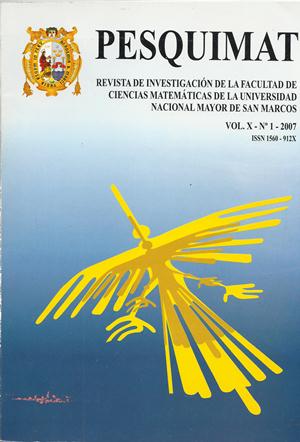ANÁLISIS DE DIAGNÓSTICO EN EL MODELO DE REGRESIÓN LOGÍSTICA: UNA APLICACIÓN
DOI:
https://doi.org/10.15381/pes.v10i1.9431Keywords:
Multivariate technic, logistic Regression model, Diagnostic analysis, analysis of residues, analysis of influence.Abstract
Logistic regression is a multivariate technique very important for its applications in different areas of knowingness and its applications has been growing more. In clinical and epidemiological research, in particular in a study coronary illness, analysis of logistic regression has been applied for first time around 60 years old (lB) . In studies of logistic regression, it is frequent that a group of observations can be outliers. In the construction of logistic regression models is important to examine the observations to detect the existence of one or more observations that is controlling important properties of the modelo We present a discussion on diagnostic to logistic regression model (5), on factors of risk in illness of bone.Downloads
Published
Issue
Section
License
Copyright (c) 2007 Olga Solano Dávíla, Agustina Ramírez Torres, Félix Manuel Bartolo Gotarate, Orlando Giraldo Laguna, Alfredo Salinas Moreno

This work is licensed under a Creative Commons Attribution-NonCommercial-ShareAlike 4.0 International License.
THE AUTHORS RETAIN THEIR RIGHTS:
a) The authors retain their trademark and patent rights, and also on any process or procedure described in the article.
b) The authors retain the right to share, copy, distribute, execute and publicly communicate the article published in Pesquimat magazine (for example, place it in an institutional repository or publish it in a book), with recognition of its initial publication in the Pesquimat magazine.
c) The authors retain the right to make a later publication of their work, to use the article or any part of it (for example: a compilation of their works, notes for conferences, thesis, or for a book), provided that they indicate the source of publication (authors of the work, magazine, volume, number and date).













